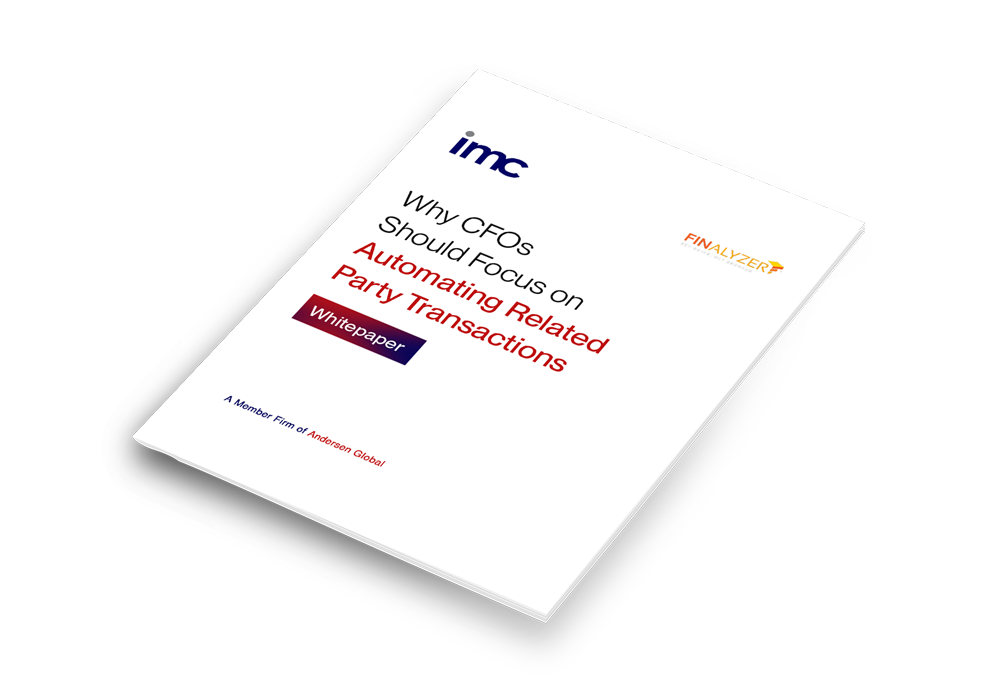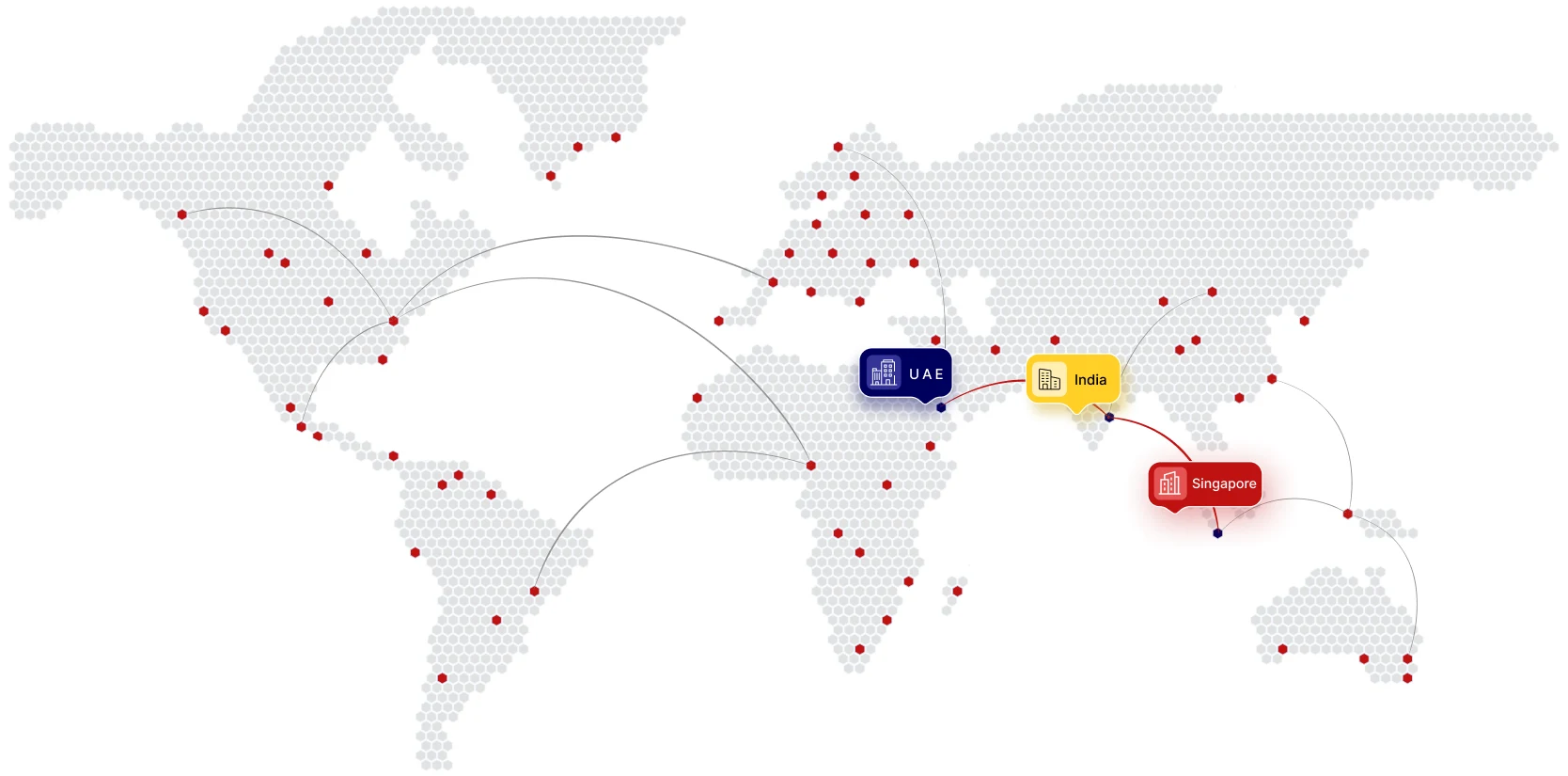
- Article, Global
- September 23, 2024
Outsourcing has emerged as a strategic move in the competitive business landscape today. While forward-thinking businesses outsource services to third-party vendors, it brings in significant risks. That’s the reason successful organizations seek vendor due diligence services from experts to screen their outsourcing partners. A report reveals that as much as 38% of businesses encounter third-party data or privacy breaches. On the other hand, 48% of organizations face violations related to compliance while working with third-party companies.
Some of the largest global companies, including Microsoft, Uber, and Toyota have experienced data breaches while working with third parties. Thus, risk management turns out to be crucial. A report reveals that 62% of cases related to system intrusion involved a partner. This points to the vulnerable nature of supply chains. No wonder, successful businesses focus on robust risk management practices to protect themselves from data breaches and maintain their reputation as well as financial stability.
- What is Third-Party Risk Management?
- Recent Changes in Third-Party Risk
- Common Types of Third-Party Risks
- Are Businesses Liable For Third-Party Data Breaches?
- The need for a Third-Party Risk Management Framework
- How Are Organizations Addressing Third-Party Risks?
- Best Principles of Third-Party Risk Management
- What is the Future of Third-Party Risk Management?
What is Third-Party Risk Management?
Third-party risk management (TPRM) is all about assessing and controlling risks related to outsourcing services or data handling to external vendors. It includes identifying risks and assessing and controlling risks related to outsourcing services or data handling to external vendors. This is a methodical approach that helps organizations understand potential risks related to third-party relationships. Have a look at the third-party vendor due diligence checklist for business to make sure that the vendors fulfill all compliance and security standards.
Recent Changes in Third-Party Risk
1. Higher dependence on third-party software
2. Greater network of collaborations
3. Focus on regulatory aspects
Common Types of Third-Party Risks
Have a look at the primary types of risks associated with third-party vendors.
- Financial and reputational risks: Data breaches can lead to financial losses besides inflicting reputational damage to an organization for failing to maintain the privacy of their client’s information.
- Legal and regulatory risk: The non-compliance with laws by the vendor can affect the compliance status of your organization. It can even lead to legal liabilities.
- Operational risks: Disruptions from third parties can have an adverse impact on your operational efficiency and data integrity. It can be the result of a service failure or security breach.
Are Businesses Liable For Third-Party Data Breaches?
The need for a Third-Party Risk Management Framework
How Are Organizations Addressing Third-Party Risks?
Top global organizations are consistently adopting risk management practices rather than one-time measures. The key methods include:
- Use vendor risk assessment questionnaires: These tools help in assessing the data security practices of the vendor. This helps in obtaining a transparent view of their security posture.
- Vendor audits: Similar to Adobe’s Guardrails program and Microsoft’s Supplier Privacy & Assurance Standards, businesses must conduct regular audits. These evaluations help in obtaining deeper insights into vendor compliance and security.
Best Principles of Third-Party Risk Management
Check out the best principles of third-party risk management while outsourcing services to vendors.
- Update your data map: Maintain an up-to-date map of all data that third-party vendors handle. This ensures proper compliance checks and agreements.
- Ongoing due diligence: Consult professional experts for vendor due diligence services to understand the financial status and SOC reports of your vendors.
- Framework and process: Establish a comprehensive framework for assessing third-party risk. This should include a guide detailing the procedures of vendor risk management and compliance standards.
- Industry standards: Make sure to establish your risk management program on industry standards like ISO 27001, SOC 2, and NIST frameworks. These standards provide a foundation for assessing the security control of vendors.
- Onboarding and offboarding: Develop standardized processes for onboarding and offboarding. They must understand your security policies and adhere to the same.
- Security ratings: Monitor the security posture of your vendor using security ratings and be proactive while addressing potential issues.
- Internal audit process: Establish an internal audit process to identify and address issues before external audits take place.
What is the Future of Third-Party Risk Management?

- Article, Singapore
- September 17, 2024
Importance of Payroll Management to Any Business in Singapore
Poor payroll management exposes you to several risks: legal penalties, financial losses, and ruined relationships with employees. Payroll management ensures more than just processing salaries to make your business compliant with strict Singapore regulations.
Effective payroll management solutions in Singapore will help you avoid all pitfalls and enhance employee satisfaction and operational efficiency. IMC Group provides powerful payroll solutions to handle such complicated tasks and allows you to focus on growing your business.
Key Strategies for Effective Payroll Management in Singapore
Understand Statutory Requirements
Outsource Payroll Management
Handle Overtime Pay and Employee Benefits
Effective overtime pay and employee benefits management is crucial in retaining a compliant and motivated workforce. When you outsource finance and accounting services, you get support from payroll experts. It eliminates all guesswork in correctly calculating overtime, public holiday pay, and other benefits. They bring more clarity and transparency to both the employer and the employee.
Safeguard Data Security and Privacy
Conclusion
Payroll management helps to not only keep enterprises of any scale in compliance but also instils confidence in the workforce, making processes seamless. These good practices will enable organizations in Singapore to avoid challenges with payroll processing, protect sensitive information, and smoothen processes for continued success.
So, simplify your payroll management by letting IMC Group take the stress from compliance to payroll processing with comprehensive payroll solutions. The expert team ensures accuracy, security, and efficiency in all areas, so you will be free to grow your business.

- NEWSLETTER, GLOBAL
- September 11, 2024
While payroll management is an essential task for every business, most organizations find it too overwhelming. Forward-thinking businesses seek payroll outsourcing services from established service providers as a viable solution to reduce their administrative burdens. Outsourcing payroll can be a strategic way to save costs and optimize in-house resources.
However, payroll outsourcing also comes with certain specific risks and challenges. In this edition, we have comprehensively discussed the essential details of outsourcing payroll. This will help businesses decide whether outsourcing is the right move for them in 2024.
What Is Payroll Outsourcing?
What Are The Most Common Outsourced Payroll Services?
Different organizations seek outsourced payroll services to cater to their unique needs. Some of the most common outsourced payroll services include:
- Payroll account setup solutions
- Managing payment methods like direct deposit
- Calculating wages and distributing them
- Work hours tracking
- Remitting payroll taxes
- Payroll deductions handling
- Completing year-end tax paperwork
How Does Payroll Outsourcing Work?
Benefits of Outsourcing Payroll Services
Have a look at the key advantages of outsourcing payroll services.
- Cost Savings: Outsourcing payroll services often turn out to be cost-effective compared to maintaining an internal team. Companies in high-cost areas prefer to outsource their services. Third-party providers, particularly in regions with lower labor costs, can significantly reduce payroll processing expenses.
- Expertise: Specialized payroll providers like the IMC Group often have extensive experience and use sophisticated management systems. This ensures compliance with tax laws and minimizes errors.
- Better Focus: On outsourcing administrative tasks, companies can focus on their core competencies. This goes a long way in enhancing efficiency and business growth.
Disadvantages of Payroll Outsourcing
Although outsourcing payroll services brings a plethora of benefits to the table, it’s imperative to take note of its potential drawbacks.
- Limited Oversight: Outsourcing payroll reduces direct control of the business over its processes. Any potential error made by the provider can result in fines or lead to dissatisfaction among the employees.
- Data Security Risks: Transferring sensitive information like Social Security numbers and bank details to a third-party provider increases the risk of data breaches.
Best Practices for Outsourcing Payroll
Here are the best practices we recommend while outsourcing payroll services to a third-party service provider.
- Choose an established provider: When it comes to something as vital as payroll management, it’s wise to partner with an established third-party company. Working with a reliable provider significantly reduces the risks associated with errors and security breaches.
- Stay abreast of tax and regulations: Organizations must remain proactive on the latest tax regulations, including both domestic and international employment laws
- Take time to get started: While searching for the right outsourced payroll service provider, make sure not to rush. Consider all your options carefully, as payroll is a critical function. Choosing the right provider can make a significant difference in both operational efficiency and the satisfaction of your employees.
Professional Payroll Outsourcing Services from Experts
With professional outsourcing services, businesses can streamline their processes and reduce costs. A dedicated hand allows them to focus more on their core activities. The IMC Group continues to be a top partner for global brands, offering customized payroll outsourcing services based on their requirements. These experts are known for their commitment to adhere to the best practices, maximizing the advantages for their clients. Partnering with the reputed service provider, organizations can streamline their accounting operations.

- NEWSLETTER,U.A.E
- September 11, 2024
The UAE Continues to Witness a Rise in the UHNWI Population
A report reveals that the global population of UHNWIs has surged, and the UAE has been leading the list of countries attracting this wealthy class. Currently, the country is home to more than 116,500 millionaires. It also houses 20 billionaires and 308 centi-millionaires. The strategic location of the country, along with its stable political and economic environment continues to attract investors from all over the world.
By 2024, around 128,000 millionaires are expected to migrate globally. In this context, too, the UAE remains a prime destination. This influx serves as a specimen of the favorable tax policies of the country, along with its regulatory framework. These factors have positioned the UAE as a preferred hub for UHNWIs looking for stability, wealth preservation, and business opportunities.
From Holiday Homes to Permanent Residency
In the past, UHNWIs considered the UAE as a destination for holidays, investing in holiday homes and secondary residences. However, the trend has now shifted, with many of these families establishing permanent bases in the country. This is evident from the growing number of UHNWIs purchasing local assets. These include both residential and commercial real estate.
The favourable regulatory environment in the country, along with strong legal frameworks provides them with the confidence to make long-term investments.
Thanks to local legislation, this crucial transition has been possible in recent decades. The country has witnessed several regulatory reforms in recent months to enhance the business environment. This projects the UAE as a favorable destination for wealthy families. Particularly, certain laws have been introduced to enhance asset ownership and ease tax burdens. With better inheritance laws, UHNWIs have consistently increased their investments in the region.
Infrastructure Investments to Support the Influx of UHNWIs
The UAE is heavily investing in infrastructure to accommodate the needs of the growing UHNWI population. From luxury real estate developments to world-class hotels and transportation networks, the country is rapidly expanding its offerings. As a part of major projects, as many as 26,000 new homes have been constructed in the country in 2023. By 2025, another 32,000 properties have been planned to cater to the high-end clientele.
The real estate market in the UAE has witnessed growth, particularly in locations like Jumeirah Bay Island, Palm Jumeirah, and Emirates Hills. There has been a record-breaking number of property transactions, evident from the high sales volumes. This clearly indicates a strong demand from the UHNWIs looking to invest in the luxury housing sector in the country.
Tax Benefits and Regulatory Reforms Driving the Interest of UHNWIs
The favorable tax regime in the UAE has been a critical factor in attracting UHNWIs. Some of the provisions they benefit from include the zero-income tax policy, no capital gains tax, and no inheritance tax. This makes it an ideal location for those looking to preserve their wealth across generations.
Some of the recent regulatory reforms in the financial hubs like the Dubai International Financial Centre (DIFC) have also enhanced the appeal of the UAE. New family office regulations have been introduced in the country, which allows UHNWIs to manage their wealth without stringent oversight. This provides them with greater flexibility and control over their assets.
The UHNWI Growth Trend is Likely to Continue
In the coming years, the UAE is poised to witness consistent growth in its UHNWI population. A 30% spike in this population is projected by 2028, which will have a lasting impact on the economy of the country. Sectors like real estate, finance, and luxury goods are likely to benefit the most from this growth trajectory.
As the UAE continues to adapt its regulatory environment and invest in infrastructure, the country is set to maintain its status as the leading destination for UHNWIs in the Middle East. With the popularity of family offices for wealth management, an increasing number of affluent families are turning to these service providers. The IMC Group is one of the leading partners for family office setup in the UAE. With proper infrastructure and support from experienced professionals for wealth management, the region is well-positioned to attract and retain the world’s wealthiest individuals.

- NEWSLETTER, GLOBAL
- September 11, 2024
Why CFOs Are Turning to Outsourcing
CFOs face several challenges, ranging from compliance issues to ever-changing regulations and managing complex financial operations across different regions. Outsourcing accounting tasks has emerged as an efficient strategy to handle these challenges. A study reveals that accounts payable is the most extensively outsourced service, at 65%. Accounts receivable and cash applications are two other commonly outsourced services, at 48% and 31%.
The most common positions that need to be filled with outsourced staff include staff accountants, senior accountants, and tax accountants.
The Key Benefits of Outsourcing
1. Instant Access to Talent
In a fast-paced business environment, companies cannot afford to wait and find the right pool of talent. On average, it takes around 44 days for US businesses to hire the right candidate after posting a job. This implies that other staff need to perform this extra work during the phase, which ultimately compromises the productivity of the company. Even after hiring a candidate, the onboarding process takes up a few weeks.
Outsourcing accounting tasks to experts ensures instant access to talent. This keeps the company productive during the phase and puts it on its growth trajectory.
2. Providing the Right Culture
While attracting talent, companies need to provide the right culture to their staff. Prospects for career development and emotional support prove crucial, which many companies fail to provide.
A survey revealed that 17% of employees prefer working for a company with a positive culture, while 16% and 15% of businesses focus on work-life balance and recognition. With outsourced services, new businesses low on resources can fill their talent deficit in case they fail to hire full-time employees.
3. Cost-Efficiency and Scalability
One of the prime reasons why CFOs are outsourcing accounting functions is the cost-effectiveness it brings. Significant overheads are associated with maintaining an inhouse team of accountants. These include salaries, benefits, training, and software costs. On the other hand, CFOs can reduce these expenses while outsourcing, while providing a more flexible pricing model based on the specific needs of the company.
Also, outsourcing services provide the necessary scalability to businesses. As companies grow, their financial requirements keep evolving. With outsourced services, organizations can easily scale up or down, depending on their current needs. This ensures that they pay only for the services required.
Access to Specialized Expertise with Outsourced Accounting Services
Top outsourcing firms adhere to the latest regulations in the industry. Thus, CFOs can take advantage of this expertise and avoid costly mistakes. In the competitive industry, remaining compliant with financial regulations is a priority.
Established teams providing CFO Consulting Services, like the IMC Group, continue to be the first choice for successful businesses. Deploying cloud-based systems and AI-driven analytics, these professionals ensure the accuracy and efficiency of financial operations. In a world where efficiency and cost-saving measures largely drive success, outsourcing accounting functions has emerged as a vital strategy for CFOs.

- NEWSLETTER,U.A.E
- September 11, 2024
Since the onset of the Covid-19 pandemic, the UAE has witnessed remarkable economic growth. The post-pandemic business environment has seen a 2X growth in the number of companies registered in the country in just four years. As of the middle of 2024, the UAE recorded 1.021 million registered companies, marking a staggering 152% growth from 405,000 companies recorded at the end of the first half of 2020. This massive growth trajectory is the result of a series of initiatives taken by the UAE government, along with reforms to boost the economy when global uncertainty loomed large.
On 2nd September, a recent UAE Cabinet meeting was chaired by Sheikh Mohammed bin Rashid Al Maktoum, Vice President, Prime Minister of the UAE, and Ruler of Dubai. The meeting highlighted the economic achievements of the country. The authorities discussed the impact of 30 economic decisions, laws, and policies that the UAE government implemented during and after the pandemic. All these measures fostered an economic environment conducive to the growth of business and foreign investments, leading to long-term economic sustainability.
Key Achievements of the UAE in the Post-Pandemic Period
During the period, one of the crucial achievements of the UAE was its record-breaking inflows of foreign direct investments. In 2023, the UAE attracted AED112 billion ($30.5 billion) in foreign investments. This cemented its status as one of the most attractive business destinations in the world. Globally, the country was placed just behind the US in terms of the number of new FDI projects. It marked a 33% increase in such projects compared to the previous year. This surge in investments defines the growing resilience of the UAE on the global economic stage and its ability to compete with the largest economies of the world.
Sheikh Mohammed bin Rashid Al Maktoum stated that these were not just accidental achievements. They are the result of a clear and decisive strategy. He highlighted the efforts made by the government in positioning the UAE among the top five countries globally recording real growth in GDP, and within the top 10 in different global competitiveness indices.
The success of the country is also evident from its rapid transition towards a knowledge-based, innovation-driven economy. Over the past four years, the country has enacted more than 30 updated economic laws. This makes the country a compelling business hub for modern technology-based industries. Currently, the country hosts over 24,000 companies specializing in e-commerce. This further solidifies its position as a global leader in digital commerce.
Consolidated Government Financial Statistics for 2023 Reviewed
Along with the phenomenal increment in the number of companies, the UAE cabinet has also reviewed the consolidated financial statistics of the government in 2023. According to the report, the revenues of the government amounted to AED546 billion ($149 billion), while the total expenditures came to AED 402 billion ($109 billion). Substantial expenses of the government were made in sectors like public security, health, education, and social protection. With these investments, the infrastructure, social services, and overall economic environment continue to thrive in the UAE.
The UAE has also made significant strides in non-oil trade, achieving record figures. Foreign trade of non-oil goods in 2023 exceeded AED2.614 trillion ($712 billion) in 2023. Compared to 2022, this marked a 14.3% growth rate. The value of non-oil exports reached AED440 billion ($120 billion), marking a 16.3% growth compared to the previous year. This also marked a significant increase compared to the pre-pandemic levels. These developments reflect the commitment of the UAE to diversifying its economy and reducing its dependence on oil revenues.
The proactive approach of the UAE to international trade is also evident from its conclusion of 15 Comprehensive Economic Partnership Agreements (CEPAs) across four continents. These agreements have opened up new opportunities for the business community in the UAE. Four of the agreements are already in force. The economic partnership efforts are likely to result in a 33% increment in exports and contribute another AED153 billion ($42 billion) to the GDP of the country by 2031.
Professional Assistance to Ensure Compliance in the UAE
As the UAE attracts foreign investments and promote business-friendly policies, it remains committed to long-term economic growth. The UAE Foreign Direct Investment Trends and Predictions in 2024 reveal the investment potential of the country. The IMC Group continues to be a reliable partner for businesses expanding to the UAE, providing comprehensive assistance in establishing a commercial footprint in the country. With its foreign investment inflows and a robust legislative framework, the UAE is well-poised to maintain its status as a key economic player globally.

- NEWSLETTER, GLOBAL
- September 11, 2024
For small business owners, juggling multiple roles and managing daily operations as well as the long-term strategy often turns out to be a challenging task. In most cases, financial planning takes a blow, as SBOs (small business owners) remain obsessed with their core activities. This is where financial advisors for business can put them on the right track. These professionals play a crucial role in helping SBOs manage their financial health.
Financial advisors provide valuable support in different areas, which ranges from cash flow management to benefits for employees. They also guide business owners in planning for retirement and succession. Financial advisors face various challenges while working with small business clients. Unlike individual clients, SBOs deal with ash flow concerns, payroll management, and business-related loans. With professional advice, they can make informed decisions on their profit margins and future income from projects. In the process, they create comprehensive financial plans that align both with business and personal goals. Small business owners can significantly benefit from this dual focus as it holistically enhances their financial well-being.
Financial Advisors and Small Business Owners
SBOs face complex financial challenges that call for specialized expertise. Financial advisors like the IMC Group not only assist them with investment management and personal financial planning but also develop a deep understanding of their business.
Advisors offer CFO consulting services and unique financial strategies that address both business growth and personal financial goals of the owner. These professionals help to set separate accounts and credit limes for businesses and personal finances. This enhances clarity, avoiding potential legal and tax issues.
Key Services Financial Advisors Offer Small Businesses
1. Financial Planning
2. Tax Optimization
3. Retirement Planning
4. Risk Management
5. Succession Planning
6. Employee Benefits
7. Debt Management
Managing Financial Assets for Growth
Financial advisors play a crucial role in helping small businesses manage their financial assets. This is all about tracking income and expenses, forecasting cash flow, and recommending strategies to improve liquidity.
For instance, financial advisors negotiate better payment terms with suppliers or offer discounts for payments from customers. These tactics help businesses optimize cash flow and free up resources for future growth.
1. Investment Management
2. Debt Management
3. Risk Management and Insurance
Financial advisors can add significant value for small businesses in crucial areas like risk management. They analyze the financial performance of businesses and compare it to the industry benchmarks. Thus, advisors can identify areas where they can cut costs, diversify revenue streams and adjust pricing strategies to improve profitability.
Risk management strategies may also include obtaining adequate insurance coverage to protect against liabilities like personal injury, property damage, or legal disputes.
Advisors connect business owners with insurance professionals, ensuring they get proper coverage based on their specific needs. This includes different types of insurance like general liability, property, workers’ compensation, and cyber liability insurance.
Financial Advisory Services for Small Businesses
Top financial advisors play an essential role in helping small business owners manage both their personal and business goals. Offering a comprehensive suite of services, they can address everything from cash flow management to succession planning. Established financial advisors like the IMC Group provide CFO consulting services to support SBOs, helping them navigate the complexities of running a business while securing their financial future.

- NEWSLETTER,SINGAPORE
- September 11, 2024
The Parliament of Singapore passed two key legislative measures in July 2024 to draw a line of defense against financial crime. These are the Corporate Service Providers Bill (CSP Bill) and the Companies and Limited Liability Partnerships (Miscellaneous Amendments) Bill (CLLPMA Bill). These two bills are part of a broader effort to tighten the anti-money laundering (AML) laws in the country and improve transparency in corporate ownership.
These changes mark a significant overhaul to the regulatory regime in the country. Particularly, they are likely to impact corporate service providers (CSPs) and LLPs in Singapore. The bills are yet to come into effect, and businesses must consult established professionals for corporate advisory services in Singapore to stay updated through the official Government Gazette.
Key Changes in the CSP Bill
Mandatory Registration with ACRA
One of the most important changes under the CSP Bill is that all businesses offering corporate services in Singapore need to register with the ACRA (Accounting and Corporate Regulatory Authority). This includes companies that provide services like filing transactions, even if they do not do so directly with ACRA. Besides, the new mandate applies to businesses providing accounting-related services.
Failure to register as a CSP can result in severe penalties. The fines can range up to S$50,000 (US$37,905), while the span of imprisonment is up to two years. This regulatory move ensures that CSPs operate within a controlled framework. The process significantly mitigates the risk of unregulated service providers committing financial crimes.
Compliance with Anti-Money Laundering Obligations
With the new norms in place, registered CSPs will now be held to stricter standards when it comes to anti-money laundering. It’s essential for these firms to comply with AML regulations. Any breach can result in hefty fines and potential criminal liability for both the CSP and its senior management. For each offence, the provision for a maximum fine is S$100,000 (US$75,818).
The effort from the Singaporean government demonstrates its commitment to prevent misconduct, particularly cases like money laundering. Over the years, such crimes have exploited loopholes in the corporate services industry.
Fit and Proper Tests for Nominee Directors
Another significant change is the introduction of fit and proper tests for nominee directors. Only registered CSPs reserve the right to appoint nominee directors, and they need to first assess whether or not the individual is qualified. Nominee directors have a significant role to play in the corporate structure. Appointing unqualified individuals has often been a means to create shell companies for illicit activities like money laundering.
Those failing to meet the fit and proper standard can face fines of up to S$10,000 (US$7,582). This change is likely to prevent the misuse of nominee directorships and enhance corporate governance.
Key Changes in the CLLPMA Bill
Disclosure of Nominee Status
One of the major provisions of the CLLPMA Bill requires companies to disclose the nominee status of their directors to ACRA. While the identities of the nominators will remain confidential, the nominee status of directors and shareholders will be made public.
The purpose of this provision is to ensure that companies cannot hide complex ownership structures or the true identity of individuals controlling the company.
Increased Fines for Inaccurate Registers
Conclusion

- Publications
- September 6, 2024
In today’s financial world, transparency and operational efficiency are top priorities for CFOs and finance leaders. This whitepaper, authored by Finalyzer, an expert in financial automation, examines the need to automate related party transactions (RPTs). Drawing on a survey of CFOs across multiple industries, it highlights the problems with manual processes and shows how automation can reduce risk and improve transparency.
This whitepaper examines why CFOs need to automate related party transactions, based on recent survey data from finance leaders. The findings show many still rely on manual procedures, which can lead to errors, inefficiency, and increased compliance risks. Automation offers an alternative that can improve accuracy, efficiency, transparency, compliance, and risk management. While CFOs recognize these benefits, they face obstacles in implementing automation, including budget limits, reluctance to change, and a shortage of suitable technology solutions. This paper argues that addressing these issues is essential for CFOs who want to update financial operations and shield their organizations from financial and reputational damage.

Please complete your details below to download:

- Article, U.A.E
- September 5, 2024
Start Your Dubai Company Step-by-Step
1. Identify Business Activity
2. Choose a Legal Structure
3. Reserve the Trade Name
4. Obtain Initial Approval
5. Draft a Memorandum of Association (MOA)
6. Secure Additional Approvals and Business License
7. Register with the Chamber of Commerce
8. Open a Corporate Bank Account and Apply for Visas
Apply for the required visas for you and your employees by opening a corporate rate bank account. This step is crucial to managing company finances and guaranteeing legal residency in Dubai.
You can easily manage company formation in Dubai by adhering to these guidelines. Understanding the procedure and related company formation in Dubai from Amsterdam fees might help your business travel go well.
Why Are Entrepreneurs from the Netherlands and Amsterdam Choosing Dubai?
Strategic Location
Tax Benefits
Ease of Doing Business
Infrastructure
Growth Potential
Cultural Compatibility
Dubai welcomes international businesses and has a diversified culture. The Netherlands and Amsterdam entrepreneurs can easily assimilate and flourish in the city’s multicultural environment. Understanding and adjusting to local customs can improve business performance even more.
For entrepreneurs looking for new growth opportunities, these factors make Dubai an attractive destination.
Key Benefits of Company Formation in Dubai for Entrepreneurs from the Netherlands
Favorable Tax Regime
Access to a Thriving Economy
100% Foreign Ownership
Excellent Connectivity
Business-Friendly Environment
Dubai offers a business-friendly environment because of its negligent government regulations and supportive policies. The city has fundamentally worked on the method involved with setting up a business. Entrepreneurs benefit from proficient administrative procedures and an extensive variety of support services. Due to Dubai’s government’s proactive attitude, businesses can launch and develop without a hitch.
Dutch entrepreneurs can benefit extraordinarily from the company setup in Dubai. Dubai is a top objective for fruitful business adventures because of its favorable tax policy, expanding economy, 100% foreign ownership, good connectivity, and friendly business environment.
IMC is here to help entrepreneurs from the Netherlands and Amsterdam seize the incredible opportunities Dubai offers. With our expertise in company formation and strategic expansion, we provide comprehensive support to navigate the business-friendly environment of Dubai. From understanding the benefits of a robust tax system to ensuring compliance with local regulations, IMC makes the process of setting up your business in Dubai seamless and straightforward. Leverage our knowledge and experience to scale your business globally and maximize your success in Dubai’s thriving market.
A Member Firm of Andersen Global
- 175+ Countries
- 525+ Locations
- 17,500+ Professionals
- 2350+ Global Partners


















 IMC Group
IMC Group